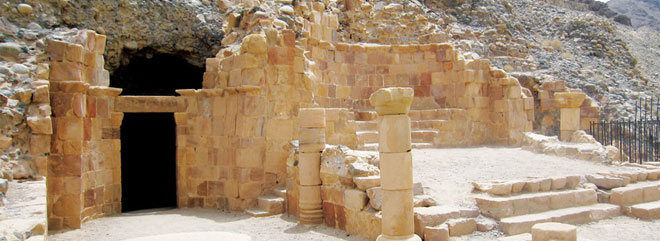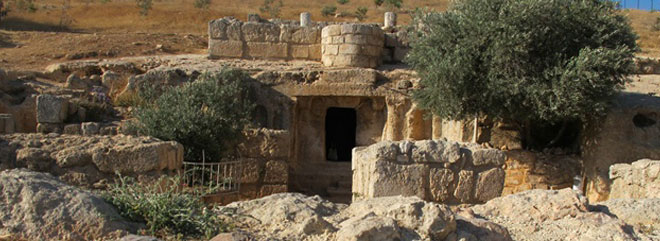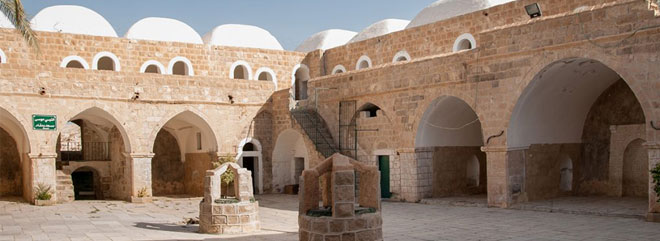


-
PACKAGE DESCRIPTION
The most appealing destination in the Middle East.
“The Land of Prophets”Jordan has been constantly settled during every single era of history since 9500 BC. The multitudes of civilizations that have passed through, or settled here, have each left their individual mark on the country – proof of the rich heritage that Jordan enjoys today. Jordan has been garlanded with a rich religious history.
Many early prophets mentioned in the Holy Qur’an are associated with Jordan; they either lived in or travelled through its land. It is believed that the land of modern Jordan forms part of the “blessed neighborhood” mentioned in the Holy Qur’an (Surah 17, verse 1)
Jordan is a land – graced with sites, shrines and tombs of prophets and companions from the dawn of the Islamic faith.
-
Inclusions
3 Nights stay in Amman at 3 star hotel
1 Night stay in Petra at 3 star hotel
Daily breakfast
Return airport transfers
Mount Nebo tour to visit the Shrine of Prophet Musa (Close to Amman)
Visit to Prophet Lut’s cave (Dead Sea)
Visit to Shrines of Prophet Nuh & Sahaba (Kerak city)
Petra city tour
Visit to Ashab Al Kahf (Cave of Seven Sleepers, Amman)
Visit to Shrine of Prophet Shu’ayb & Prophet Yusha’ (Close to Amman)
Entrance fees -
Day1
Arrival at Queen Alia International Airport, then transfer to Amman hotel for overnight.
Overnight in: Amman Hotel
Day2
Breakfast at the hotel & check out. Transfer to Mount Nebo to visit the Shrine of Prophet Musa then to Lut’s cave, continue to Kerak to visit Shrines of Prophet Nuh (Noah) & Sahaba (Zayd ibn Harithah, Ja‘far ibn Abī Tālib, & Abdullah ibn Rawahah ibn Tha‘labah). Transfer to Petra hotel for overnight
SHRINE OF PROPHET MUSA – MOUNT NEBO
On the top of Mount Nebo, the Prophet Musa ‘Moses’ looked over the Jordan River towards Palestine; it is generally acknowledged that Prophet Musa was buried on Mount Nebo, although there is no actual tomb marking the spot. The Holy Qur’an describes in detail the life and mission of Prophet Musa. In fact, Prophet Musa is the most mentioned prophet in the Holy Qur’an.PROPHET LUT – (SODOM AND GOMORRAH (DEAD SEA))
The Prophet Lut lived at the same time as the Prophet Ibrahim and was sent as a Messenger to a neighboring tribe to the Prophet Ibrahim. That tribe, according to the Qur’an, practiced a perversion never before seen in the world. When the Prophet Lut told the people to abandon one of the greatest sins and delivered to them the message of Allah, they rejected him. They denied that he was a Prophet and continued with their horrid lifestyle. As a result of this, the tribe was destroyed in a terrible disaster by Allah. And Lut, when he said to his people, “Do you commit an obscenity not perpetrated before you by anyone in all the worlds? You come with lust to men instead of women. You are indeed a depraved people.” (Qur’an, 7:80-81) We rained down a rain upon them. See the final fate of the evildoers! (Qur’an, 7:84) [Our Messengers said to Lut,] “We will bring down on the inhabitants of this city a devastating punishment from heaven because of their deviance.” We have left a Clear Sign of them behind for people who use their intellect. (Qur’an, 29:34-35)This city, in which the Prophet Lut lived and which was later destroyed, is called “Sodom” in the Old Testament.Shrine of prophet NUH (NOAH) – Kerak city
Other shrines of significance to Islam are located in Kerak city. You can visit Prophet Nu h ‘Noah’ shrine, Allah sent Noah to his people to warn them of divine punishment if they continued to worship idols. As stated in the Holy Qur’an in a Sura entitled Noah (Sura 71, verses 1-3): “We sent Noah to his People (with the Command): Do thou warn thy People before there comes to them a grievous Chastisement. He said: O my People! I am to you a Warner, clear and open: That ye should worship Allah, fear Him and obey me”.
Zayd ibn Harithah or Zayd mawla Muhammad (c. 588-629 CE), was a prominent figure in the early Islamic community and the only one of sahaba whose name appears in the Qur’an (33:37).He was the adopted son of the prophet. He was the 01st leader who killed during the battle.
Ja‘far ibn Abī Tālib (Died 629), also known as Ja‘far at-Tayyār, was the son of Abu Talib ibn ‘Abdul Muttalib (the uncle of prophet), and the elder brother of the fourth Islam caliph, Ali ibn Abi Talib. Jafar was raised by his uncle, Abbas ibn ‘Abdul Muttalib, for his father was a poor man and had to support a big family. He embraced Islam in around 613. He appointed Zayd ibn Harithah as commander of the army and he was subsequently killed during the battle.Abdullah ibn Rawahah ibn Tha‘labah was one of the companions of the prophet, He was one of the twelve representatives of the Ansar who took an oath of allegiance initially, before the Hijra and later spread Islam to Medina. Also he was among the 73 that pledged allegiance to the prophet in Medina; Abd Allah ibn Rawahah was third in command during the Battle of Mu’tah and was subsequently killed during the battle.
Meals: Breakfast
Overnight in: Petra HotelDay3
Breakfast at the hotel & check out. Start Petra City tour, then depart back to Amman hotel for overnight.
The Red Rose City of Petra: The giant red mountains and vast mausoleums of a departed race have nothing in common with modern civilization, and ask nothing of it except to be appreciated at their true value – as one of the greatest wonders ever wrought by Nature and Man. Although much has been written about Petra, nothing really prepares you for this amazing place. It has to be seen to be believed. Entrance to the city is through the Siq, a narrow gorge, over 1 kilometer in length, which is flanked on either side by soaring, 80 meters high cliffs. Just walking through the Siq is an experience in itself. The colors and formations of the rocks are dazzling. As you reach the end of the Siq you will catch your first glimpse of Al-Khazneh (Treasury).
The Treasury is just the first of the many wonders that make up Petra. You will need at least four or five days to really explore everything here. As you enter the Petra valley you will be overwhelmed by the natural beauty of this place and its outstanding architectural achievements. There are hundreds of elaborate rock-cut tombs with intricate carvings – unlike the houses, which were destroyed mostly by earthquakes, the tombs were carved to last throughout the afterlife and 500 have survived, empty but bewitching as you file past their dark openings. Here also is a massive Nabataean-built, Roman-style theatre, which could seat 3,000 people. There are obelisks, temples, sacrificial altars and colonnaded streets, and high above, overlooking the valley, is the impressive Ad-Deir Monastery – a flight of 800 rock cut steps takes you there.
Like the “Treasury,” the name “Monastery” is a rather inaccurate nickname, which is probably based on its remote location and some inscribed crosses in the interior. Although it may have been later used as a church (or even a hermitage), it was probably a temple. It may have been dedicated to the deified Nabataen king Obodas I, who reigned in the 1st century BC.Meals: Breakfast
Overnight in: Amman HotelDay4
Breakfast at the hotel. Transfer 10 km east Amman to visit Ashab Al Kahf (The Cave of the Seven Sleepers) and then to Salt to visit Shrine of Prophet Shu’ayb & Prophet Yusha’. Transfer back to Amman hotel for overnight.
Ashab Al Kahf (The Cave of the Seven Sleepers)
A popular attraction outside of Amman is Ashab Al- Kahf or The Cave of the Seven Sleepers. Mentioned in the Holy Qur’an in a Sura named Al-Kahf (the Cave), it is located outside the village of Al-Raqim, 10 km east of Amman. Persecuted by despotic rule of Trajan for monotheism, a group of pious youths took refuge in this cave. To preserve them, Allah put them to sleep, and when they revived 300 years later (309 lunar years as inimitability mentioned in the Holy Qur’an), they thought that they were only asleep for a day or so. Christianity was widespread by then, and when they were discovered, Allah put them to rest forever at the cave; there still stand Byzantine and Roman ruins as well as a mosque, which exactly fit the descriptions in the Holy Qur’an.Shrine of Prophet Shu’ayb ‘Jethro’ – Salt city (30km North-west Amman)
Shuʿayb, or Shoaib, meaning who shows the right path), believed that he was sent as a prophet to two communities, namely the Midianites and the People of the Wood, He is mentioned in the Qur’an a total of 11 times. He is believed to have lived after Abraham, Shoaib proclaimed the faith of Islam and warned the people to end their fraudulent ways. When they did not repent, God destroyed both the communities, Shoaib is understood to have been one of the few Arabian prophets mentioned by name in the Qur’an, the others being Saleh, HUD, Ishmael and Mohammad. It is said that he was known by early Muslims as “the eloquent preacher amongst the prophets”, because he was granted talent and eloquence in his language, his tomb lies in Salt.Shrine of Prophet Yusha ‘Joshua’ – Salt city (30km North-west Amman)
He was the second prophet of the Bani-Isra’il, within a mosque to the west of Salt, on a vhill carrying his name lies the shrine of Prophet Yusha ‘Joshua’. He was the apprentice of Prophet Moses and later his successor. Prophet Joshua led the army of the tribes of Israel in conquest over the land of Palestine. South-west of Salt in an area known as Khirbet Ayyoub foundations of an ancient building mark the final resting place of Prophet Ayyoub ‘Job’ who is mentioned in the Holy Qur’an 4 times. His legendary patience and faith gave him strength to endure tremendous hardships. Ultimately Prophet Job was rewarded with blessings, as stated in the Holy Qur’an (Sura 21, verses 83-84): “And (remember) Ayyoub, when He cried to his Lord, ‘Truly distress has seized me, but Thou art the Most Merciful of those that are merciful’.
So we listened to him: We removed the distress that was on him, and we restored his people to him, and doubled their number, as a Grace from Ourselves, and a thing for commemoration, for all who serve us”.Meals: Breakfast
Overnight in: Amman HotelDay5
Breakfast at the hotel & check out. Transfer to Amman international airport for departure.
Meals: Breakfast
-
PACKAGE EXCLUSION
Airfare
Visa Fee
Travel Insurance
All other services not mentioned under ‘Inclusions’ -
TERMS & CONDITIONS
Prices are per person based on 2 persons travelling together and sharing twin/double room, subject to seasonal surcharges and availability.
ITL World reserve the right to amend the prices in case of currency fluctuations, changes in rates of exchange, and/or fuel costs, special or high season charges and hike in the airline/hotel/rail/land transportation charges before the date of departure.
For convenience of passengers and / or feasibility of operations, ITL World or their service providers may sometimes amend the itinerary.
International hotel check in time is between 2pm and 3pm and check out time is between 11am and 12pm. (Exceptions apply). Early check in and or late check-out is subject to availability of rooms and may be chargeable.
It is the responsibility of the passengers to ensure they hold valid passport, visa, travel and medical insurance, vaccination etc., as applicable for each destination.
To assist with visa application process, ITL World would provide copies of air tickets, travel insurance and other ground service vouchers for bookings made and fully paid for. Approval and issuance of visa is at the discretion of respective Embassies or Consulates and ITL World cannot in anyway influence this process. Certain nationals however receive visa on arrival in select countries, subject to prior online approvals.
City/tourist tax as applicable, must be paid directly at the hotel.
Social Share

